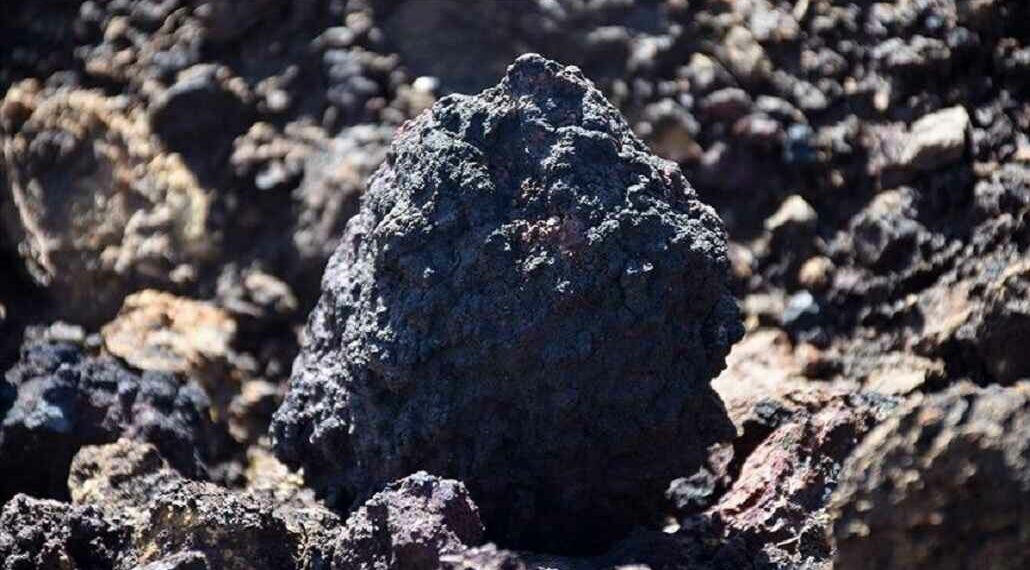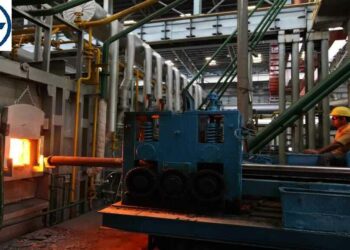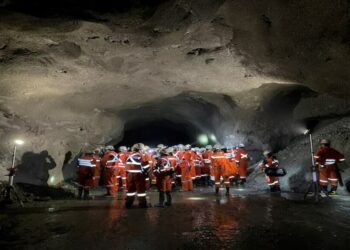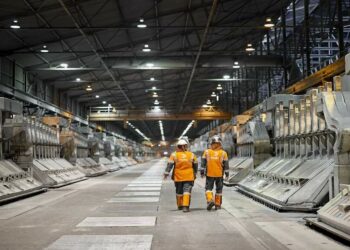In a recent interview, President Volodymyr Zelenskiy revealed that Ukraine is prepared to collaborate with the United States on developing its extensive rare earth deposits and other critical minerals. This came in response to President Donald Trump, who announced on February 3 that he wants Ukraine to supply rare earth materials to the U.S. in exchange for financial support for Ukraine’s war efforts against Russia.
Zelenskiy outlined this idea in his “victory plan” strategy, which was introduced last autumn to Ukraine’s allies, including Trump. This plan focuses heavily on forging partnerships with foreign nations to gain joint access to Ukraine’s valuable mineral resources.
This step reflects a strong commitment to bolstering domestic aluminum manufacturing capacity, reducing reliance on imports and fortifying critical supply chains integral to national security and economic growth, said Zelenskiy. Trump, in his statement, referred to opportunities involving “their rare earths and other things”, though the exact scope of minerals under discussion remains unclear.
Rare earths, comprising 17 metals crucial for electric vehicles, cell phones, missile systems, wind turbines, and other electronics, are indispensable in global industry. There are no viable substitutes.
China, which dominates global production of rare earths, has been a focal point of U.S. trade policy under Trump. Ukraine, however, has enormous potential as a critical minerals provider, possessing deposits of 22 of the 34 minerals identified as essential by the European Union.
Mineral Wealth Under Ukraine’s Control
Known as the breadbasket of Europe, Ukraine is also rich in mineral resources, many of which are vital to defense, high-tech industries, aerospace, and green energy. The Institute of Geology reports that Ukraine has rare earth elements such as:
Lanthanum and cerium: Used in TVs and lighting.
Neodymium: Used in wind turbines and EV batteries.
Erbium and yttrium: Applications include nuclear power and lasers.
Additionally, EU-funded research indicates that Ukraine has significant scandium reserves, though detailed data remains classified.
Zelenskiy also highlighted the importance of Ukraine’s titanium and uranium reserves, which are among Europe’s largest.
Ukraine possesses significant reserves of rare earth elements, as well as other materials critical for industries ranging from energy to defense, said Zelenskiy.
Resources Under Russian Occupation
The ongoing conflict with Russia has drastically affected Ukraine’s ability to fully utilize its mineral wealth.
Most of Ukraine’s coal reserves, crucial for its steel sector, are situated in the east and now under Russian control. Furthermore, two lithium deposits have also fallen into Russian hands—one in Donetsk and another in the Zaporizhzhia region.
Despite these losses, Ukraine still controls significant resources, including lithium deposits in the central Kyrovohrad region and vast reserves of graphite, a key component in electric vehicle batteries. These reserves represent 20% of global resources and are primarily located in central and western Ukraine.
Opportunities and Challenges for Mining
Ukraine’s government is actively working on deals with Western allies, including the United States, Britain, France, and Italy, to develop its critical materials sector. Oleksiy Sobolev, Ukraine’s first deputy economy minister, estimates the total investment potential of the sector to be between $12-15 billion by 2033.
The government, through the State Geological Service, is preparing 100 sites for joint licensing and development, though further details are yet to be disclosed.
Despite the opportunities, several barriers to investment remain, including inefficient regulatory processes, limited access to geological data, and challenges in acquiring land plots. Mining analysts caution that these projects will require years of development and substantial up-front investment.
Conclusion
Ukraine’s vast resources make it a critical player in the global rare earth and critical mineral market. Despite challenges posed by the ongoing conflict with Russia, the potential for collaboration with Western partners, particularly the United States, offers significant opportunities for innovation in defense, green energy, and high-tech industries.
If realized, these partnerships could pave the way for Ukraine to become a leading supplier of critical materials, reducing Western dependency on China while bolstering Ukraine’s economy and infrastructure.










